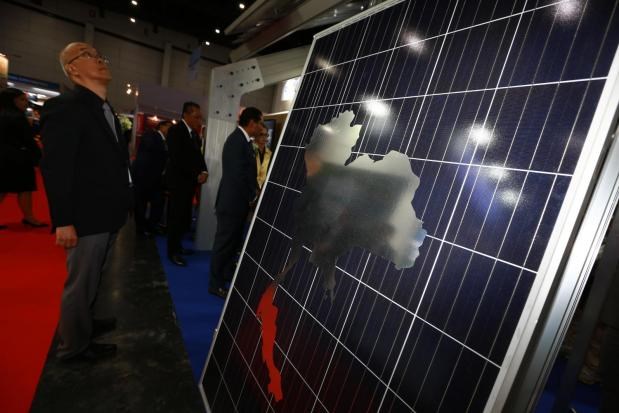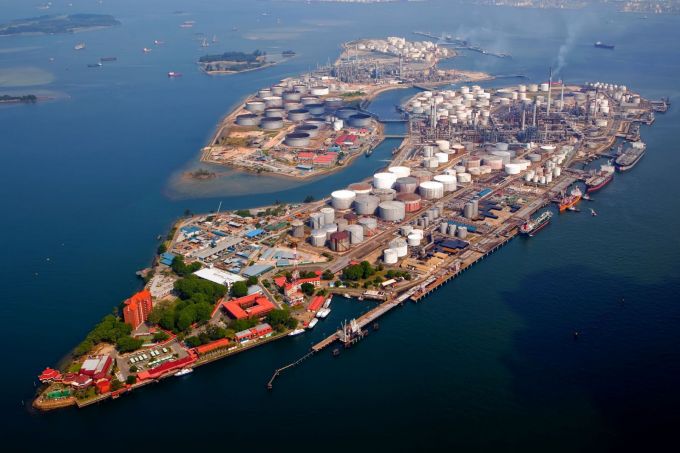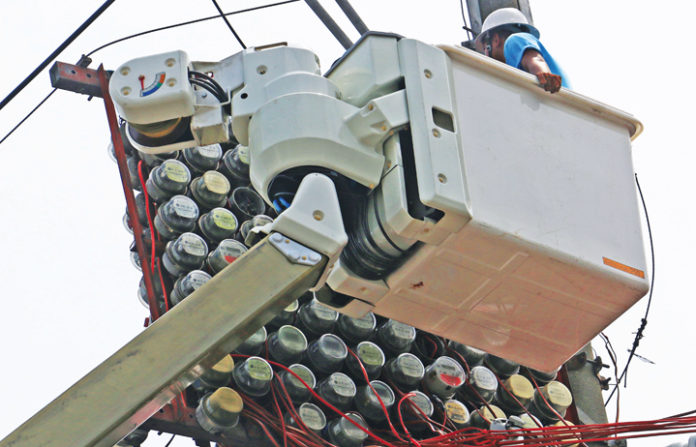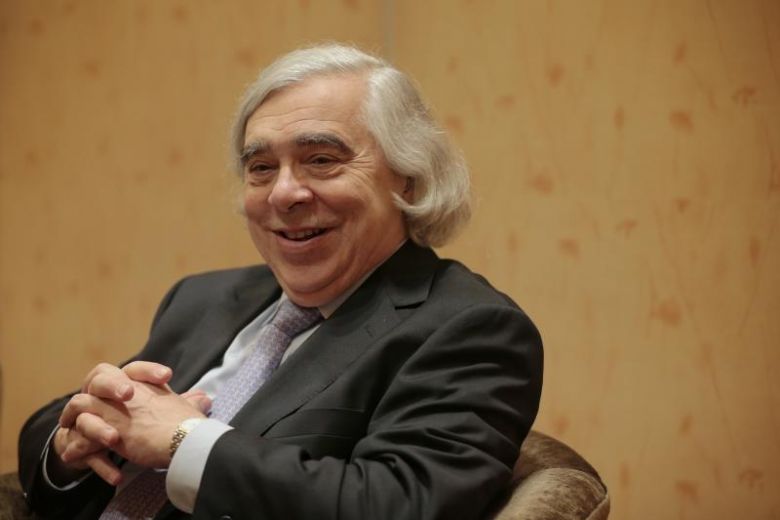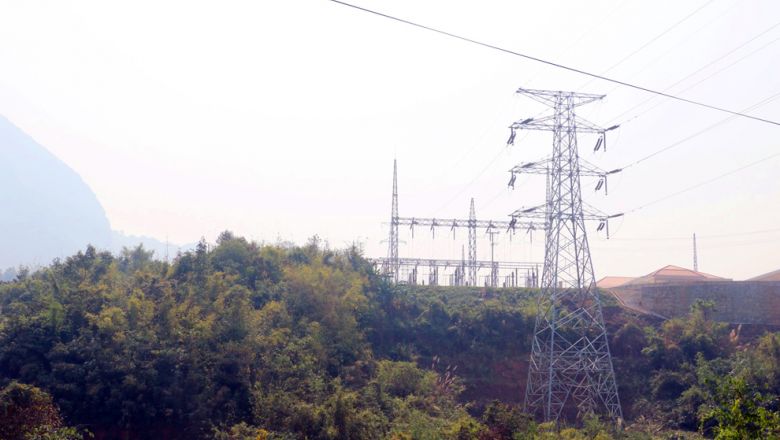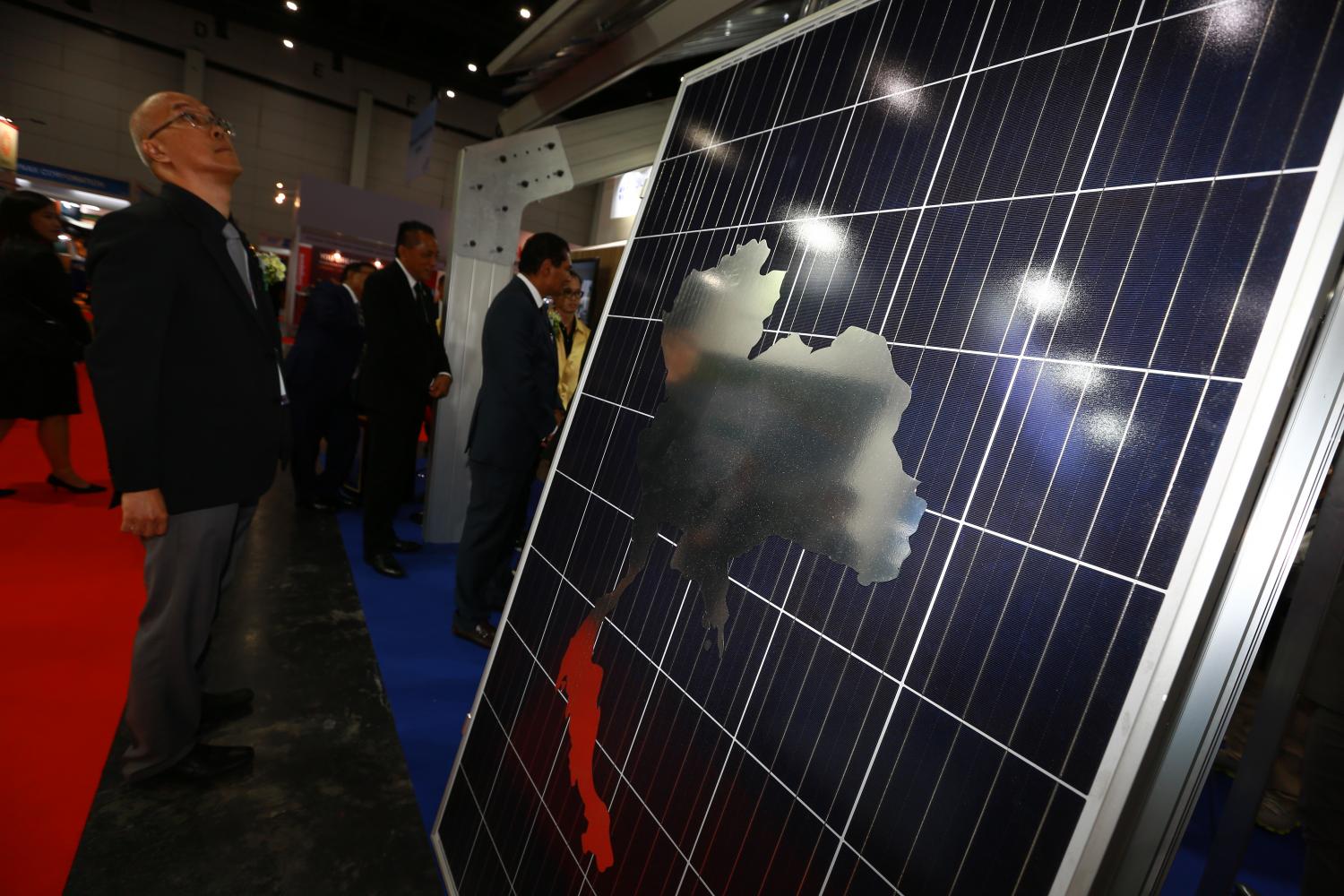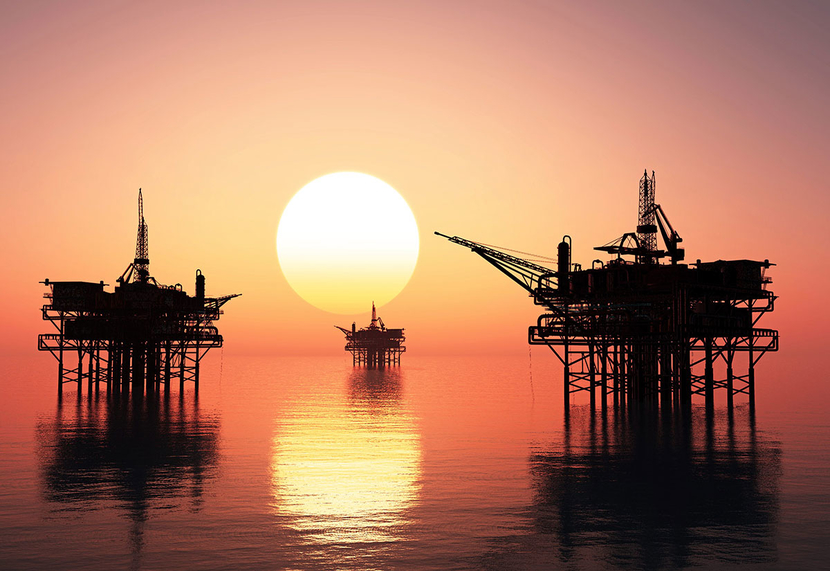- Renewables
–
- Thailand
THAI Solar Energy will work with Trina Solar, the biggest supplier of photovoltaic modules, to develop a solar energy plant in Japan.
The companies yesterday signed a memorandum of understanding (MOU) for the project and the document also aims to establish a foundation for future cooperation in Southeast Asia between Trina Solar and Thai Solar Energy, one of Thailand’s largest solar developers.
“We consider this MOU as the formal alignment of both our interests. With the size of this project, the use of the latest solar technology and the choice of such a developed market as Japan, both Thai Solar Energy and Trina Solar are showing our ambition in Asia,” said Yin Rongfang, Trina Solar’s executive vice president.
He and Thai Solar Energy chief executive Cathleen Maleenon signed the MOU at the 2019 SNEC PV Power Expo in Shanghai. Also present was Trina Solar head of research and development Chen Yi feng.
Trina Solar is one of the major exhibitors at the event.
Thai Solar Energy’s utility-scale plant in Onikobe, which is in northeastern Japan’s Miyagi prefecture, is the Thai company’s largest so far. It will use Trina Solar’s new 405W and 410W Tallmax TSM-DE15M(II) modules.
“The Tallmax modules were selected for their industry-leading output and exceptional reliability,” said Yin.
“Our modules will provide a strong return on investment for Thai Solar Energy. The developer has already partnered with us in Thailand on several other projects thanks to our good market reputation and bankability ratings.” An improvement in Trina Solar’s Tallmax module output from 370W to 415W reduces the balance of system costs by 4.5-8.5 per cent and the levelised costs of electricity (LCOE) by 2.5 per cent-4.6 per cent. This is because less construction, equipment, cabling and land are required to achieve the same total power output.


